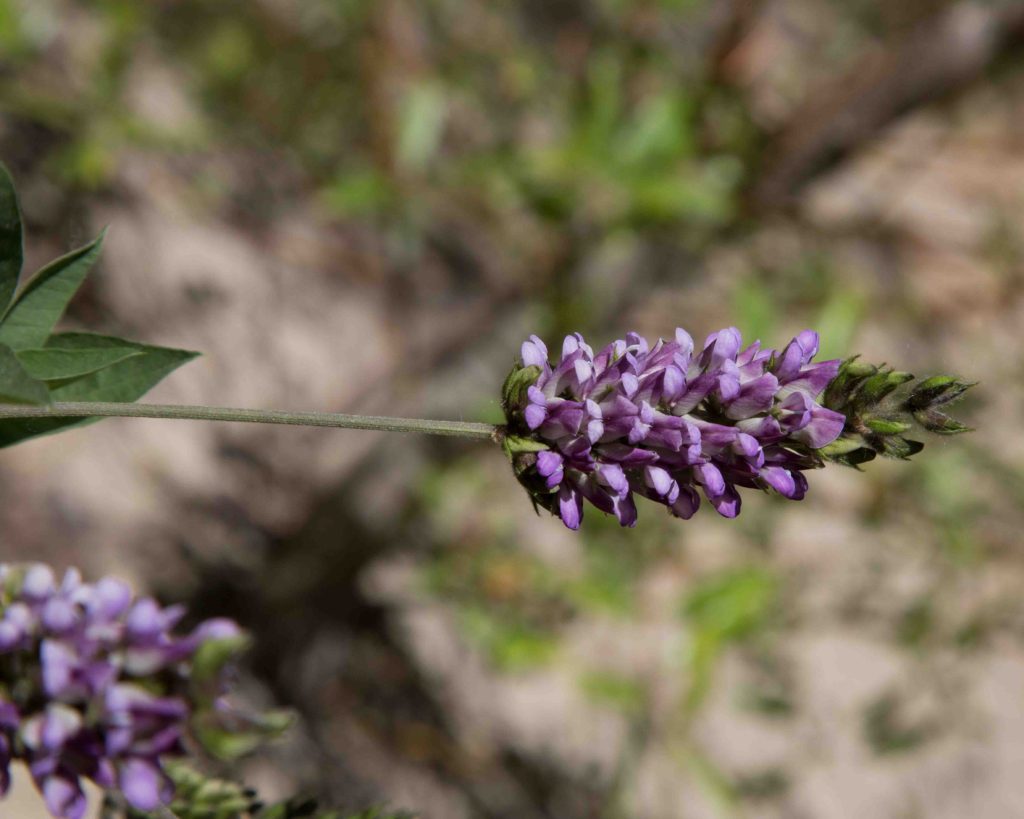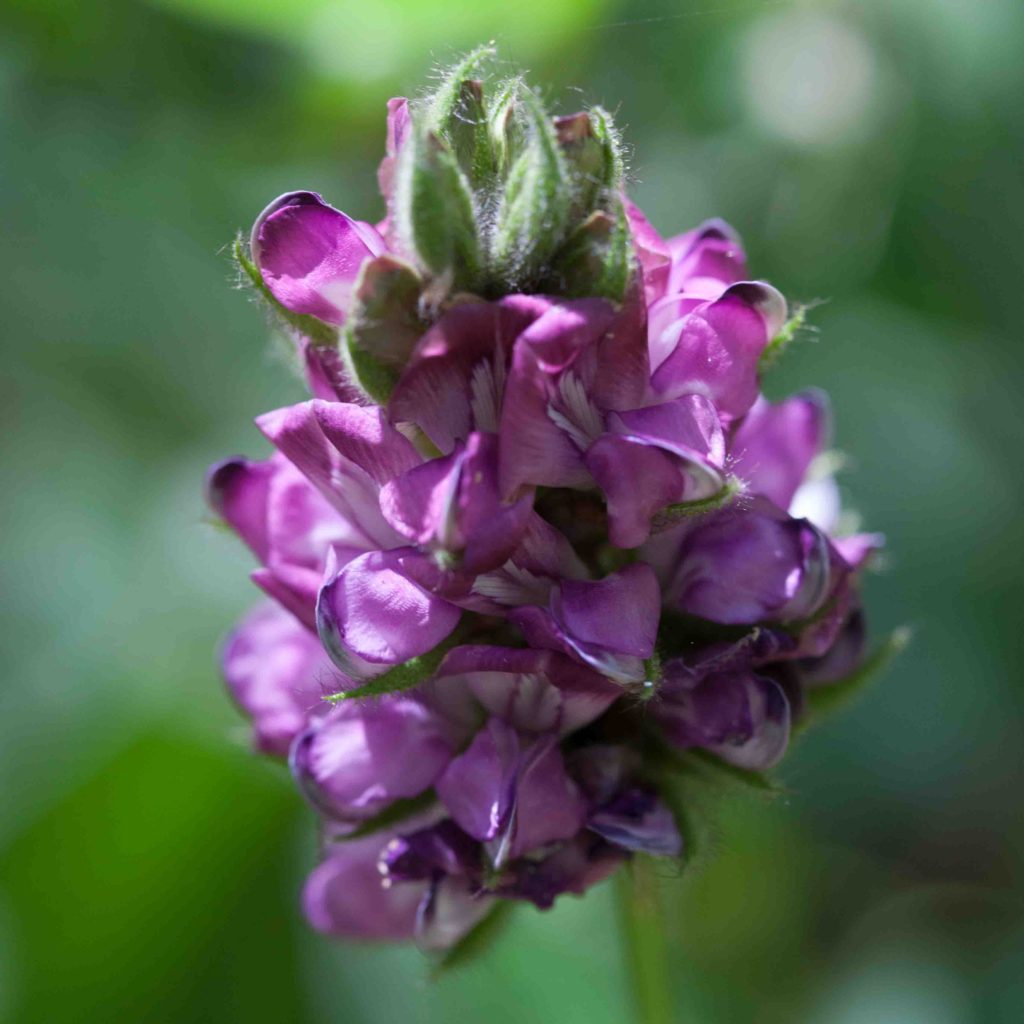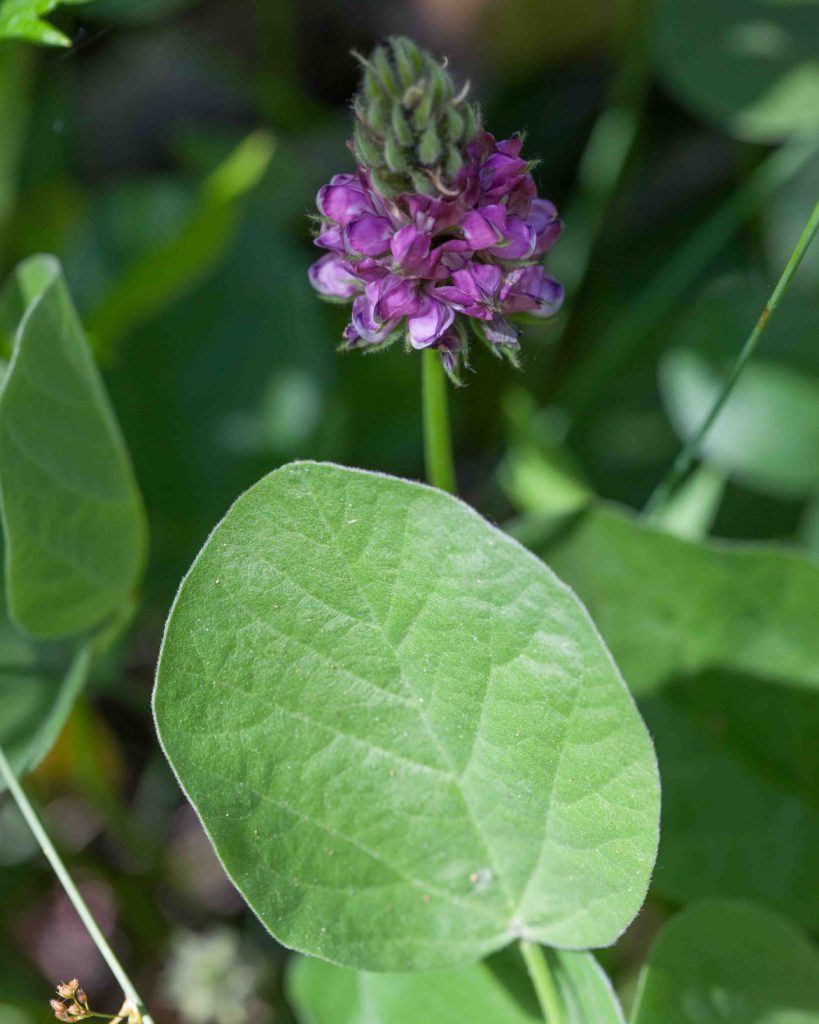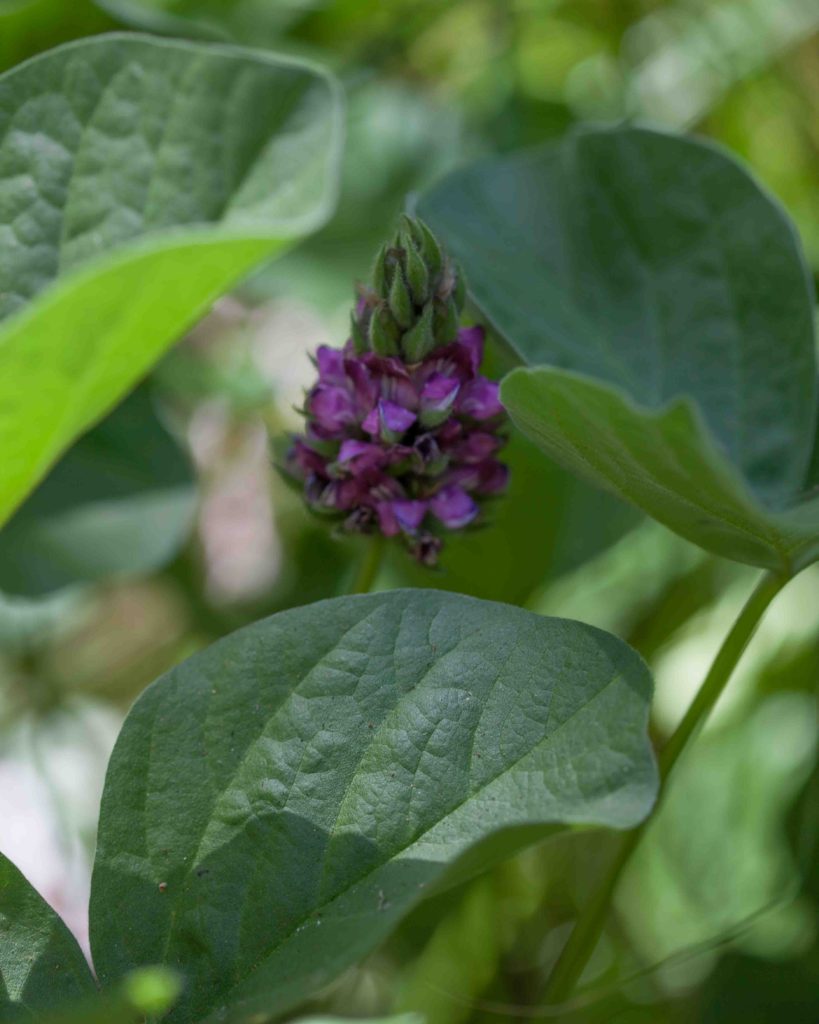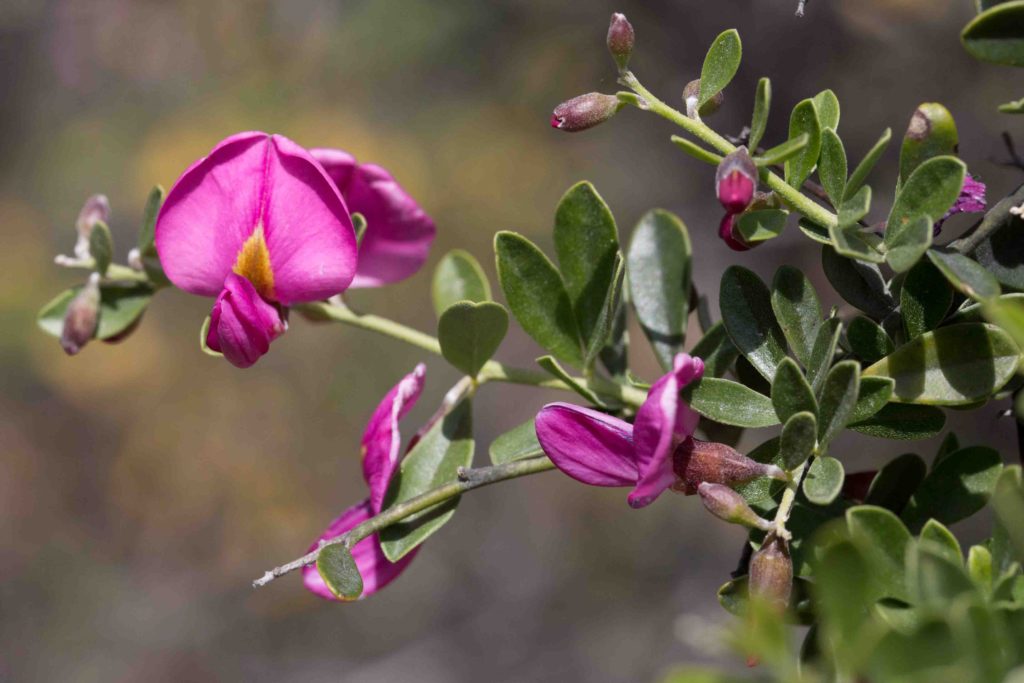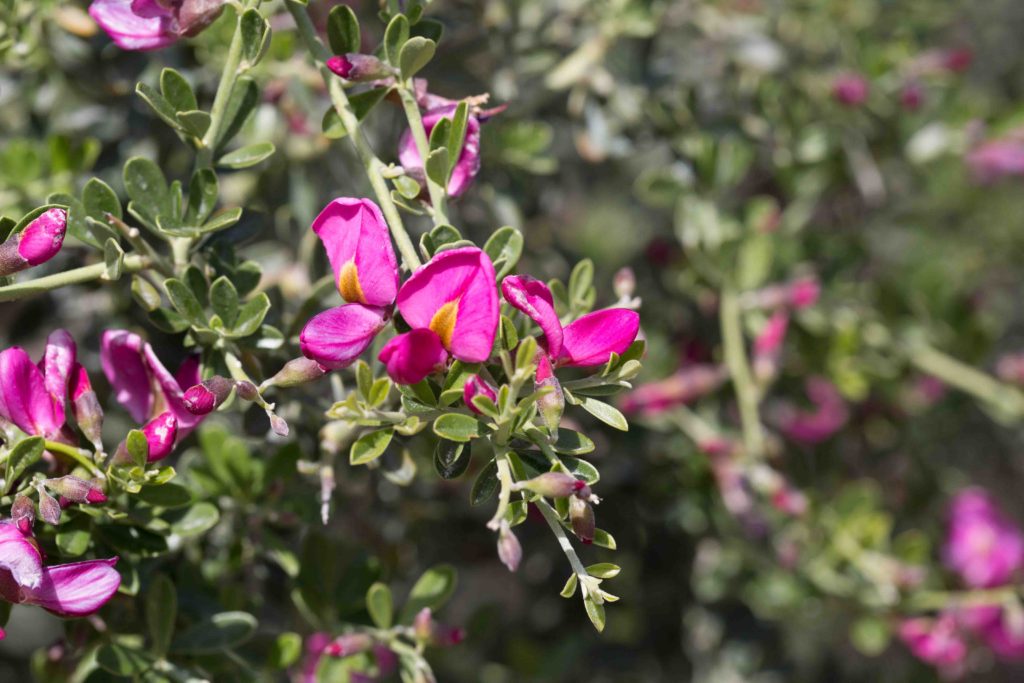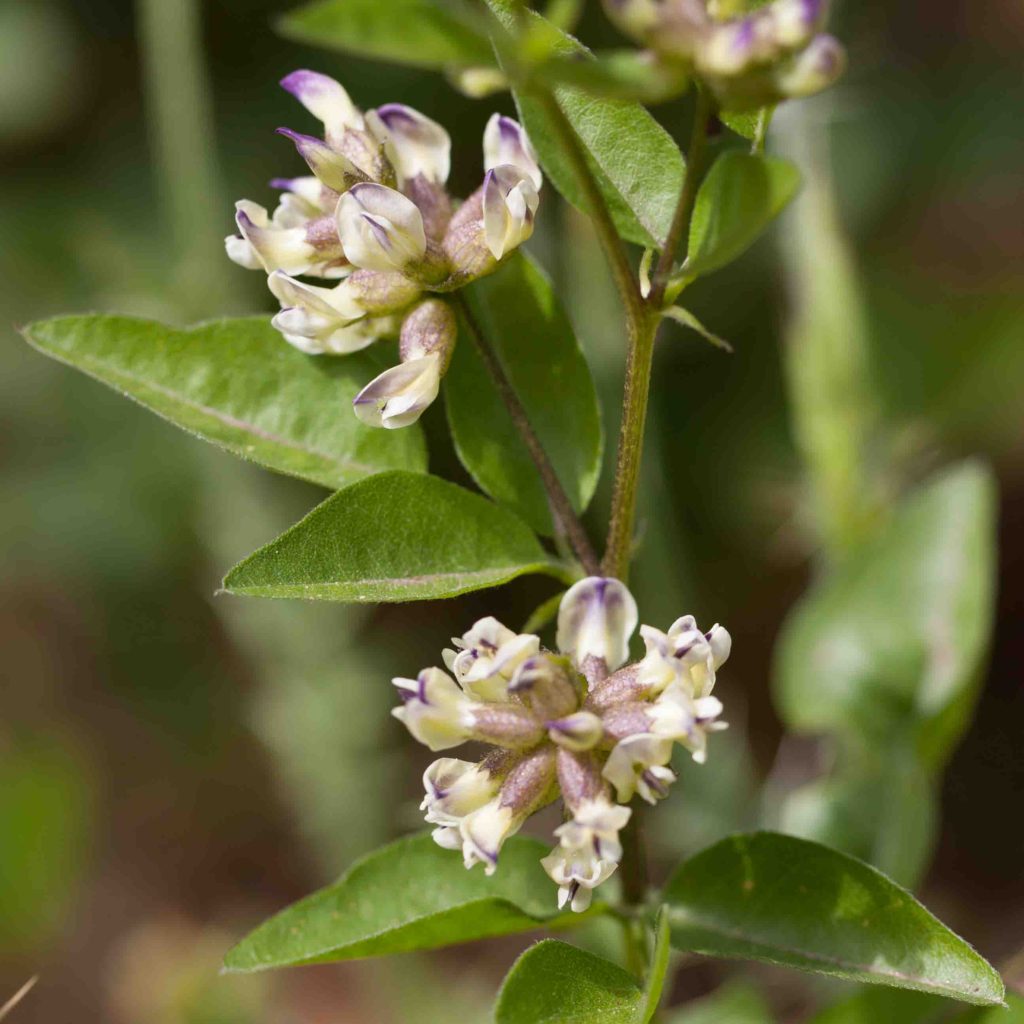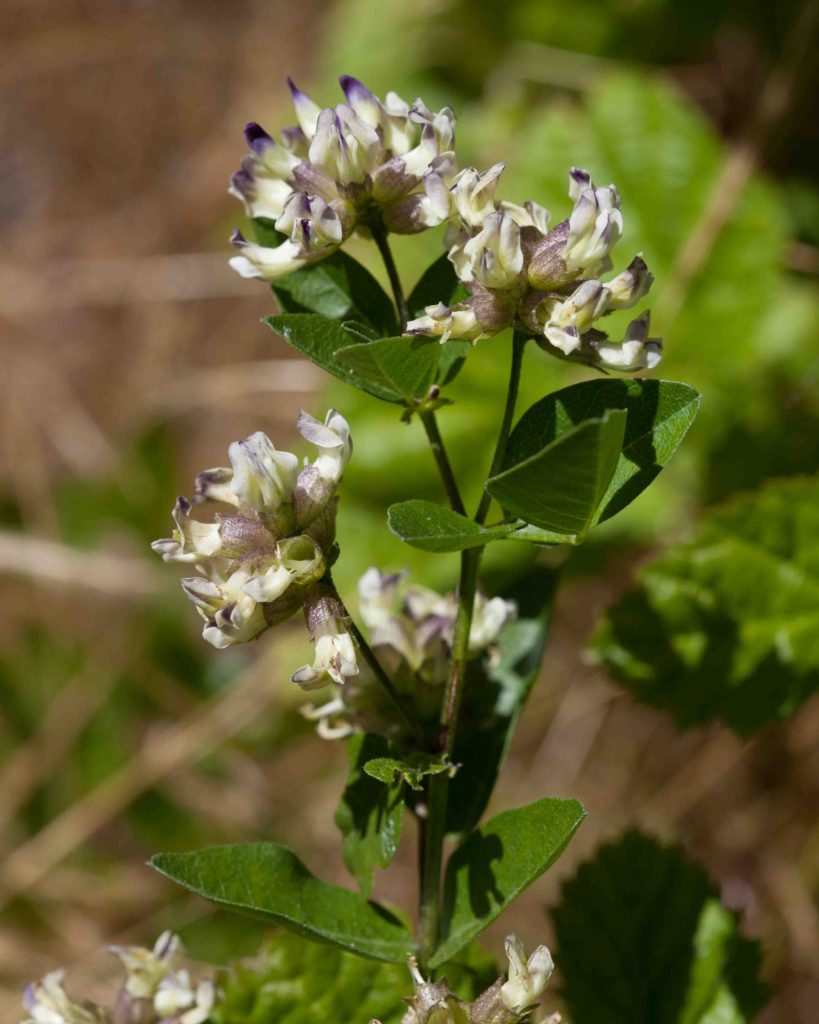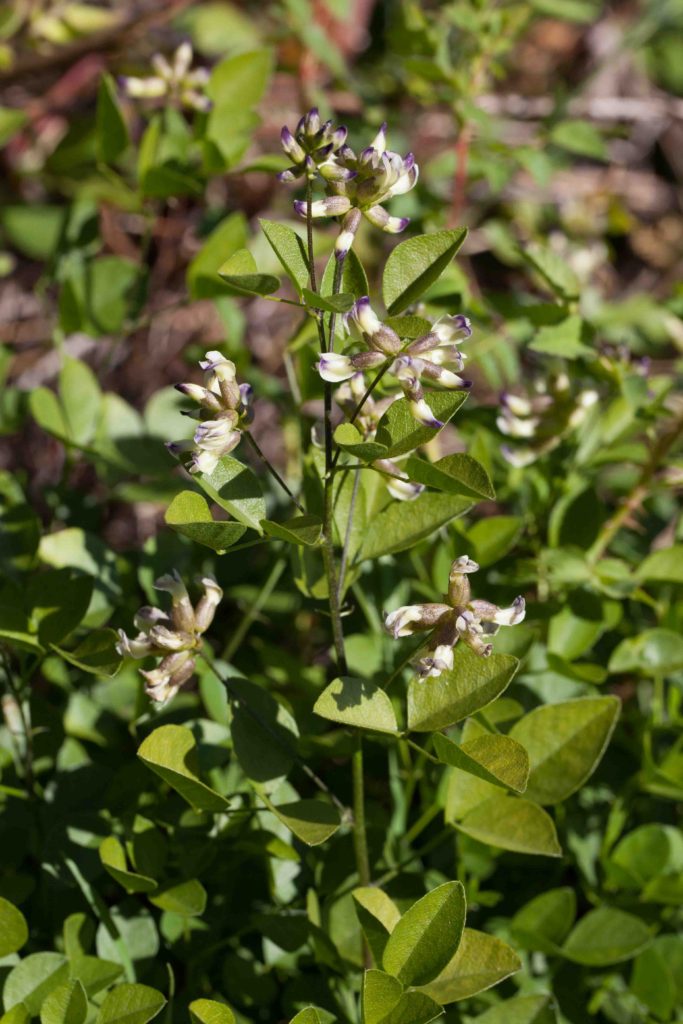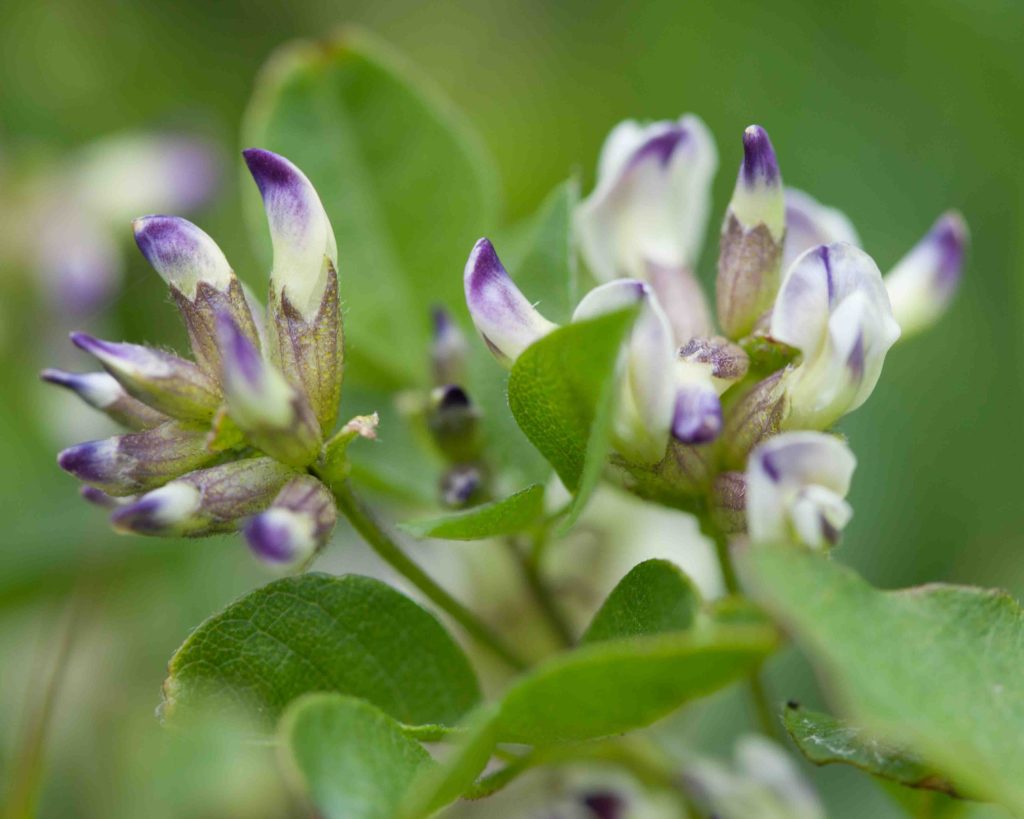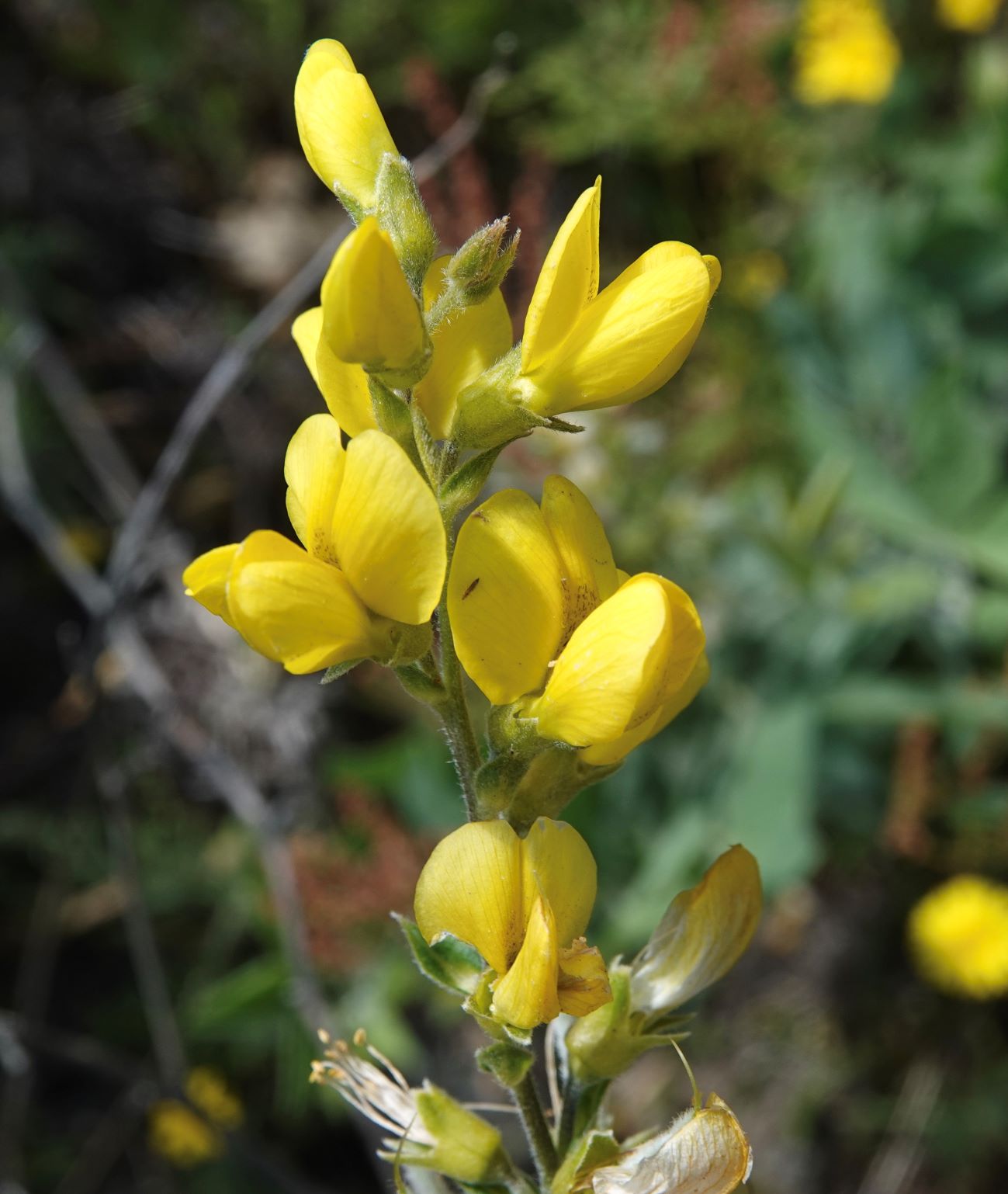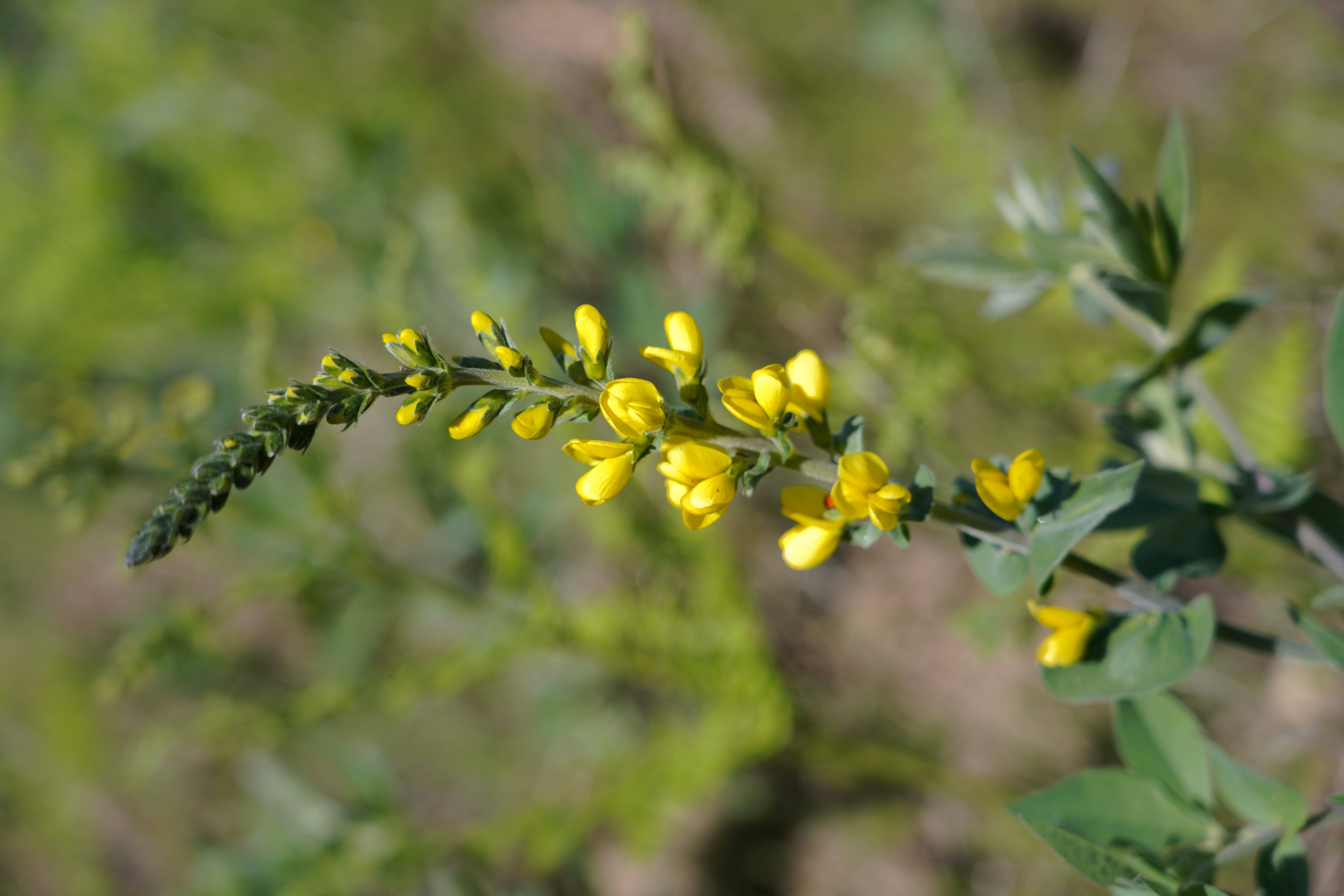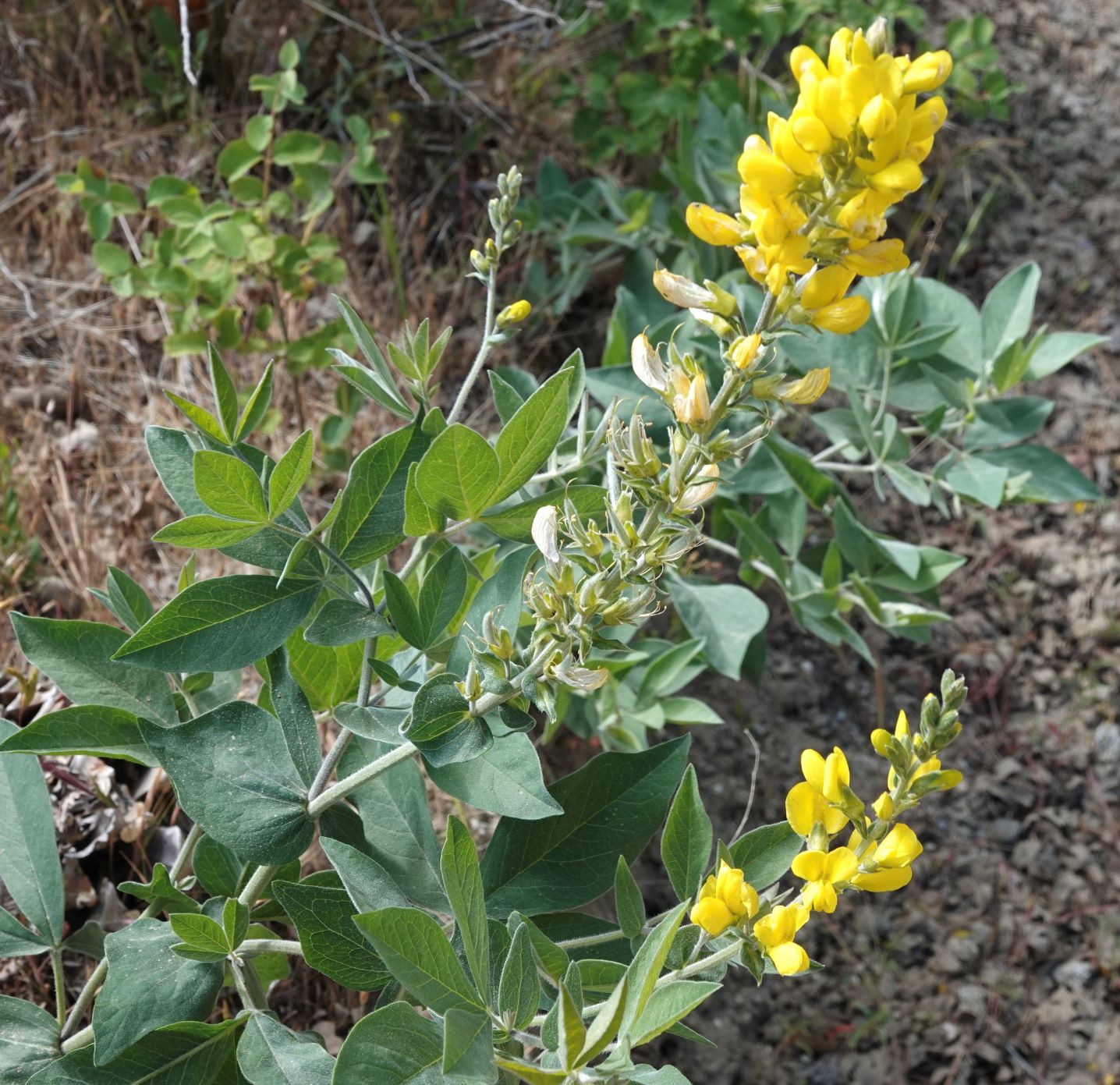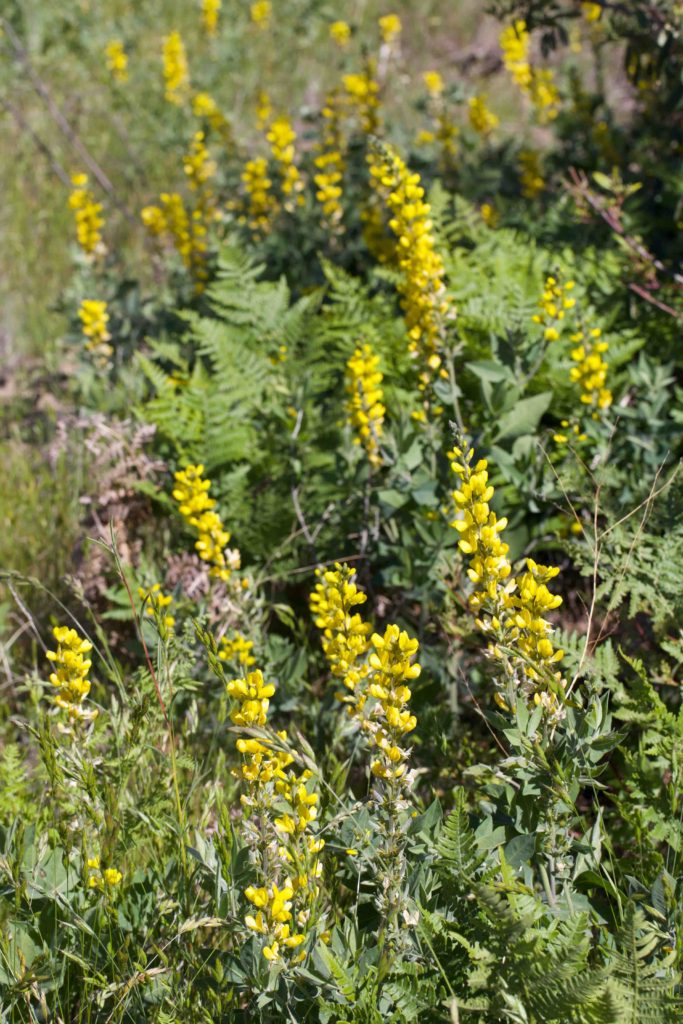Fabaceae: Pea Family — Miscellaneous
The pea family has 5-petaled flowers, consisting of a wide upper banner petal, two wing petals, plus two lower petals which are fused to form a boat-shaped keel. Many produce heads or spikes, consisting of multiple individual flowers (examples are lupines and clovers). The seed pod is generally a “legume”. This is a long, flattish pod, swollen by the seeds, and splitting lengthwise along both the top and bottom.
Leather Root – Hoita macrostachya
Blooms:
May–Aug
Plant Height:
< 2 m
Flower Size:
Med cluster
Origin:
Native
Habitat:
Riparian
Notes:
This is an erect, slender plant with lanceolate leaves. What look like branches are in fact elongated peduncles, bearing the pinkish-purple flowers in spike-like racemes. These are longer and slimmer than those of Round-leaved Hoita (Hoita orbicularis, see below).
Round-leaved Hoita – Hoita orbicularis
Blooms:
Apr–Aug
Plant Height:
10–60 cm
Flower Size:
Medium cluster
Origin:
Native
Habitat:
Riparian and other moist places
Notes:
A low-growing plant with creeping stems, this has pinkish-purple flowers that are similar to those of Leather Root (Hoita macrostachya, see above). However, the raceme-like spikes are shorter and rounder. The leaves are more distinctive, long-petioled with three rounded leaflets.
Chaparral Pea – Pickeringia montana var. montana
Blooms:
May–Aug
Plant Height:
1–3 m
Flower Size:
Medium
Origin:
Native
Habitat:
Dry slopes and ridges, generally below 600 m
Notes:
This is a large, spiny, evergreen shrub with dense, intricate branches. It has simple or palmately compound leaves, with 2–3 small elliptic to ovate leaflets. The many flowers are distinctive, solitary and bright pink-magenta, with a yellowish-brown triangle at the base of the banner. Not really a montane plant, despite its scientific name. Photo #3 by CJH.
California Tea – Rupertia physodes
Blooms:
May–Sept
Plant Height:
< 60 cm
Flower Size:
Medium cluster
Origin:
Native
Habitat:
Woodland or shaded or open brush
Notes:
Generally low-growing but sometimes erect, this has pinnate leaves with 3 triangular or lanceolate leaflets. The flowers are creamy-white with purple shading They are found in small spreading clusters with upturned tips, and a banner 10–14 mm long. Often found in extended patches.
False Lupine – Thermopsis californica var. californica
Blooms:
Apr–June
Plant Height:
60–90 cm
Flower Size:
Large cluster
Origin:
Native
Habitat:
Open places below 1500 m
Notes:
Appropriately named, since this the flower could easily be mistaken for a lupine with its tall spike of bright yellow flowers. The flowers differ from true lupines (Lupinus spp.) by having ten free stamens, whereas those of true lupines are fused. Also unlike true lupines, leaves are not in whorls. They have 3 medium-sized (3–7 cm) ovate to oblanceolate leaflets, which are gray-green and softly hairy. Photos #1, 2 and 3 by CJH.


